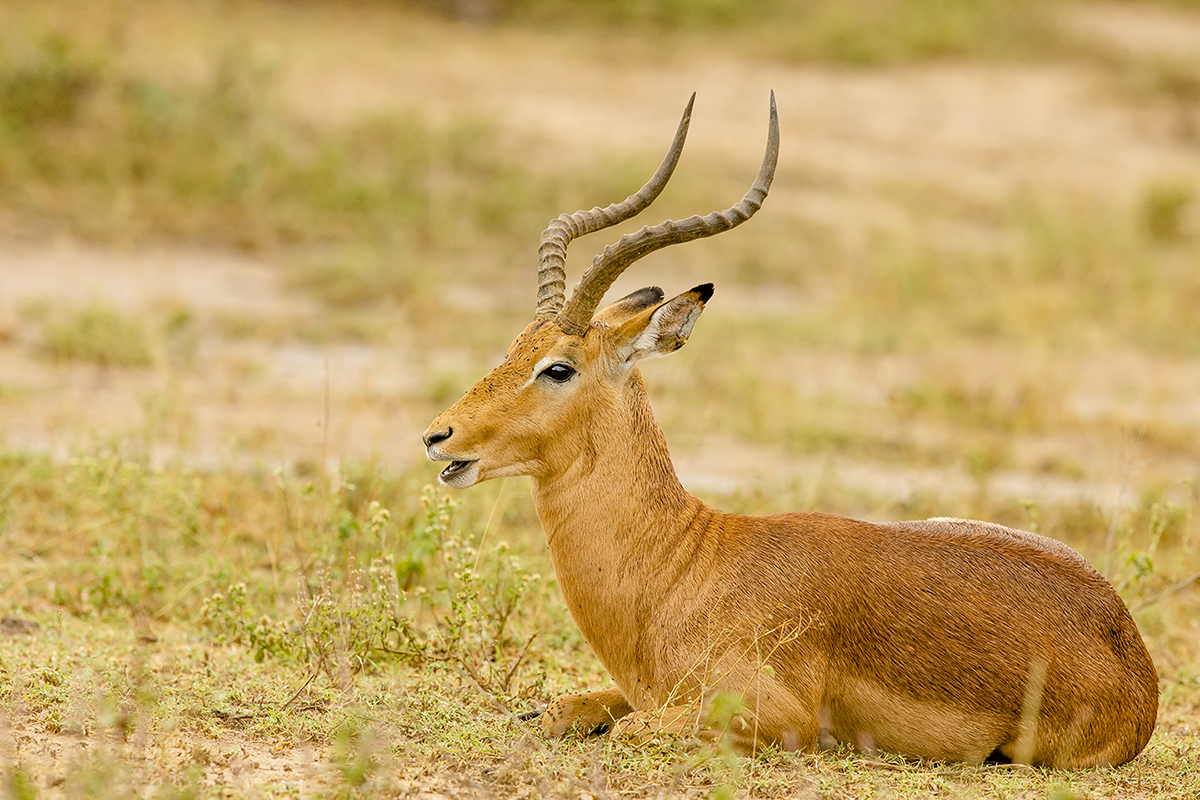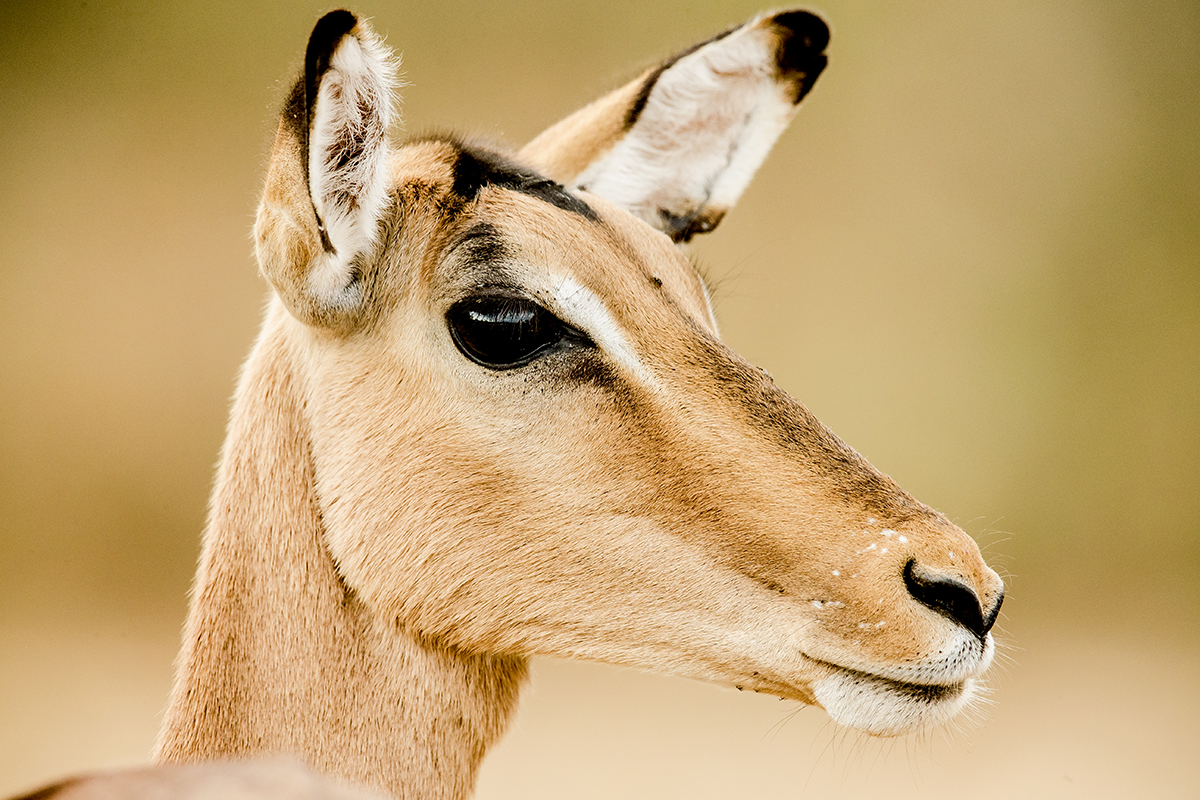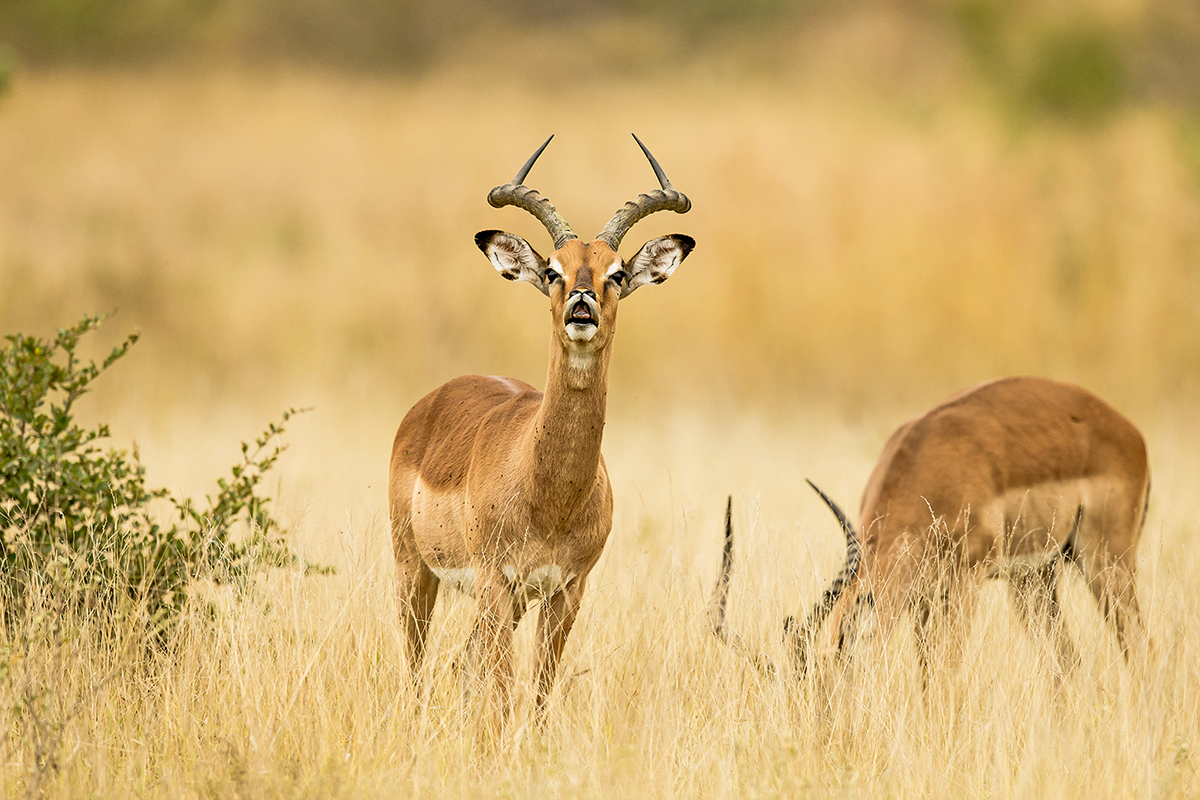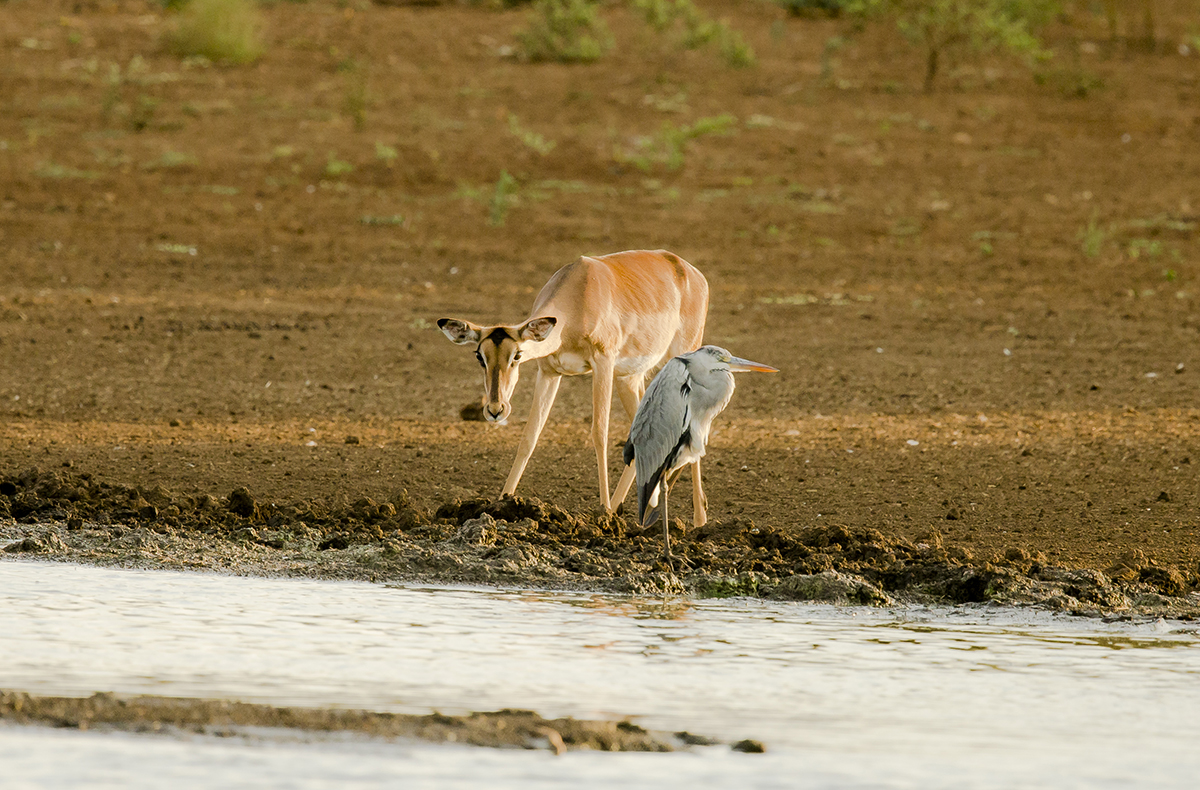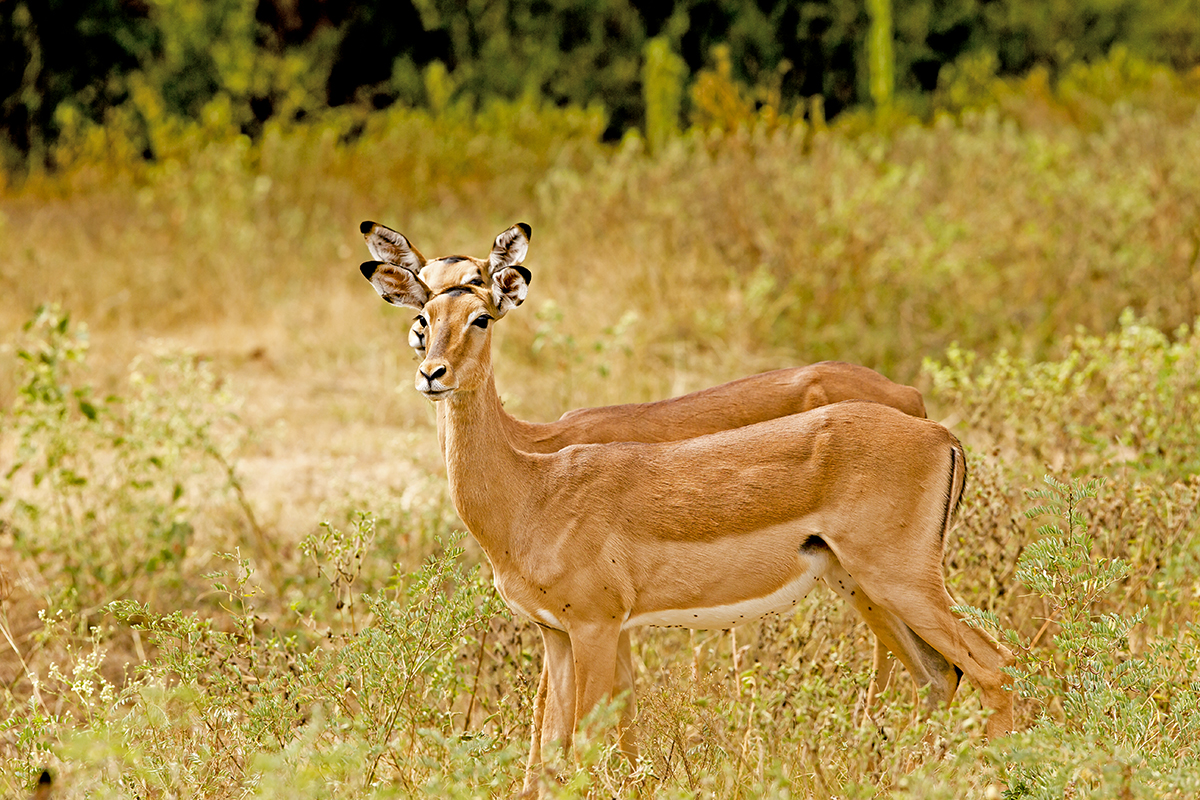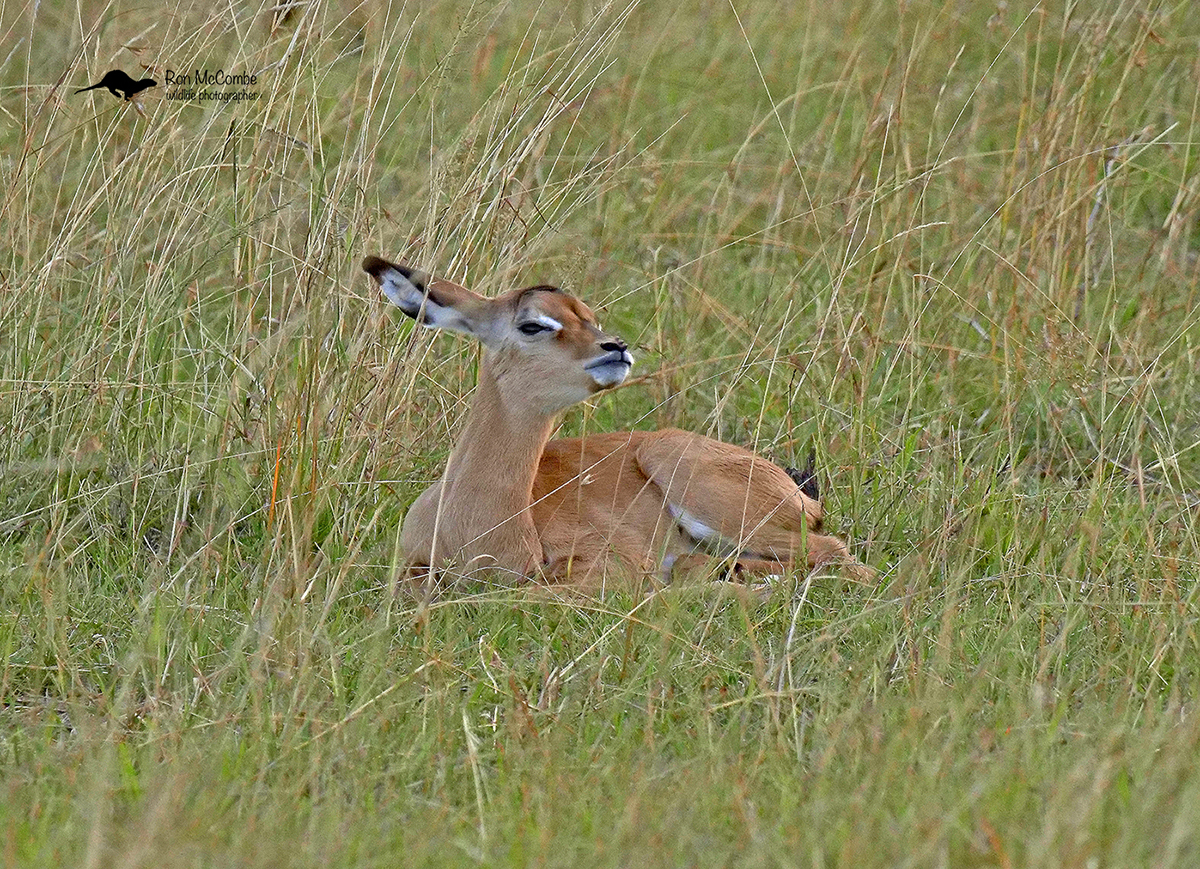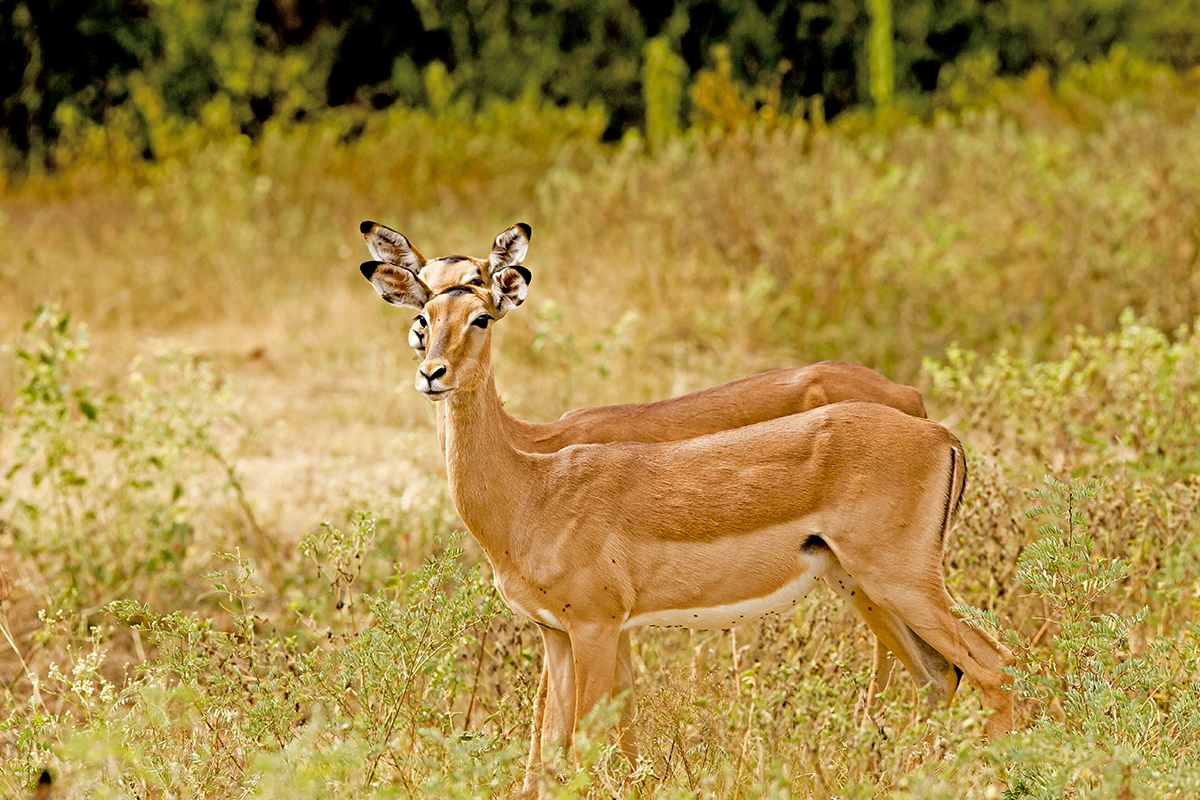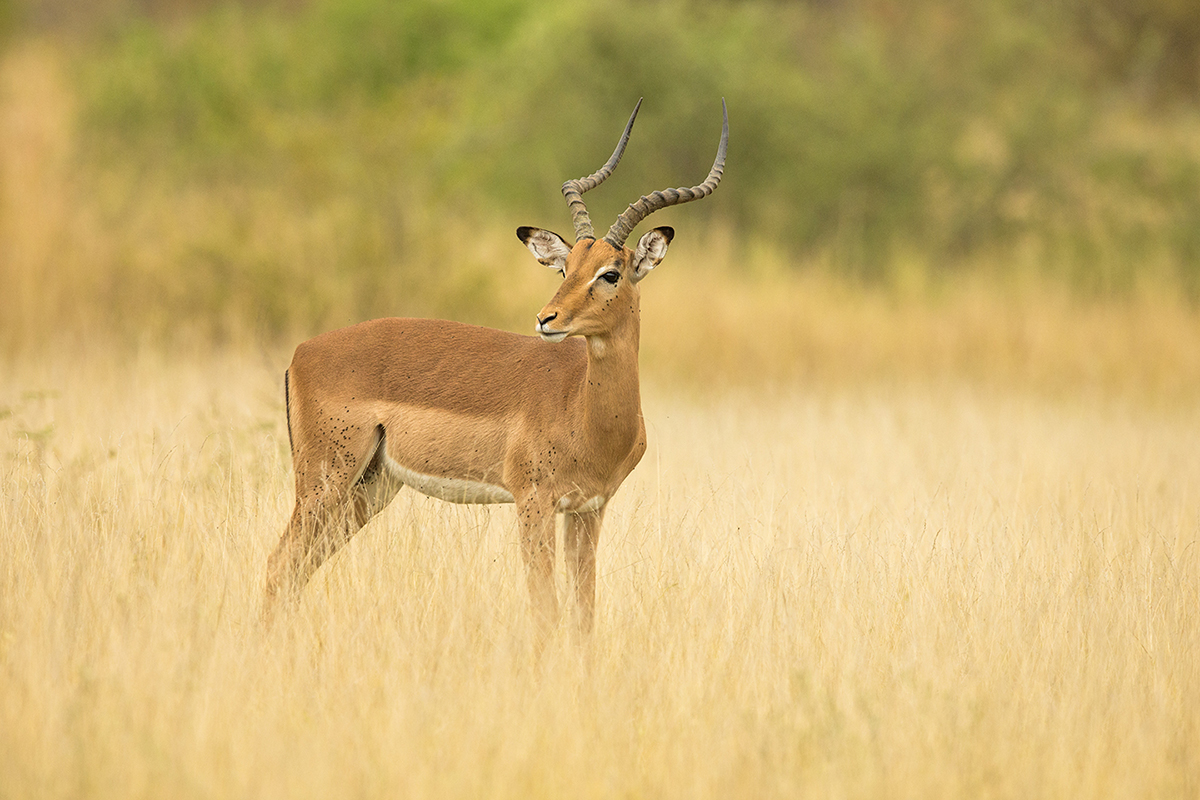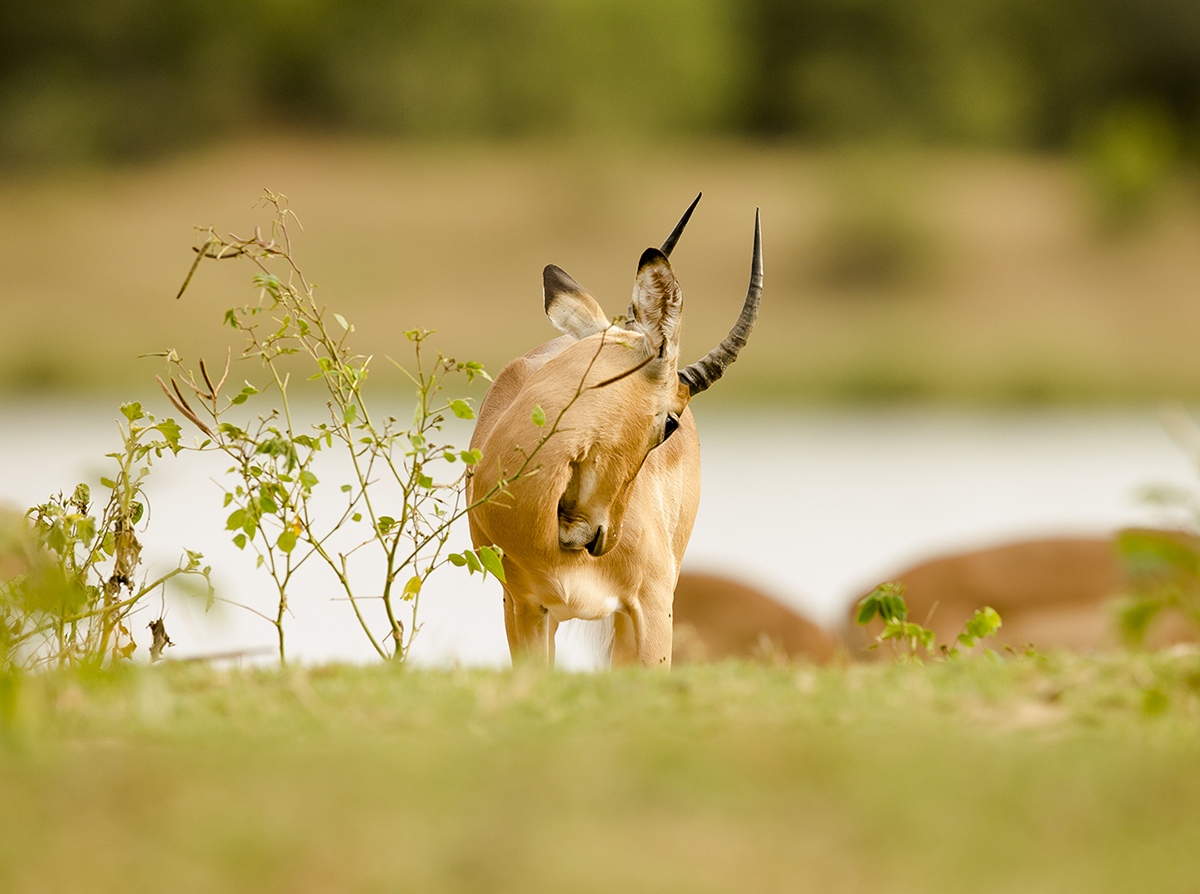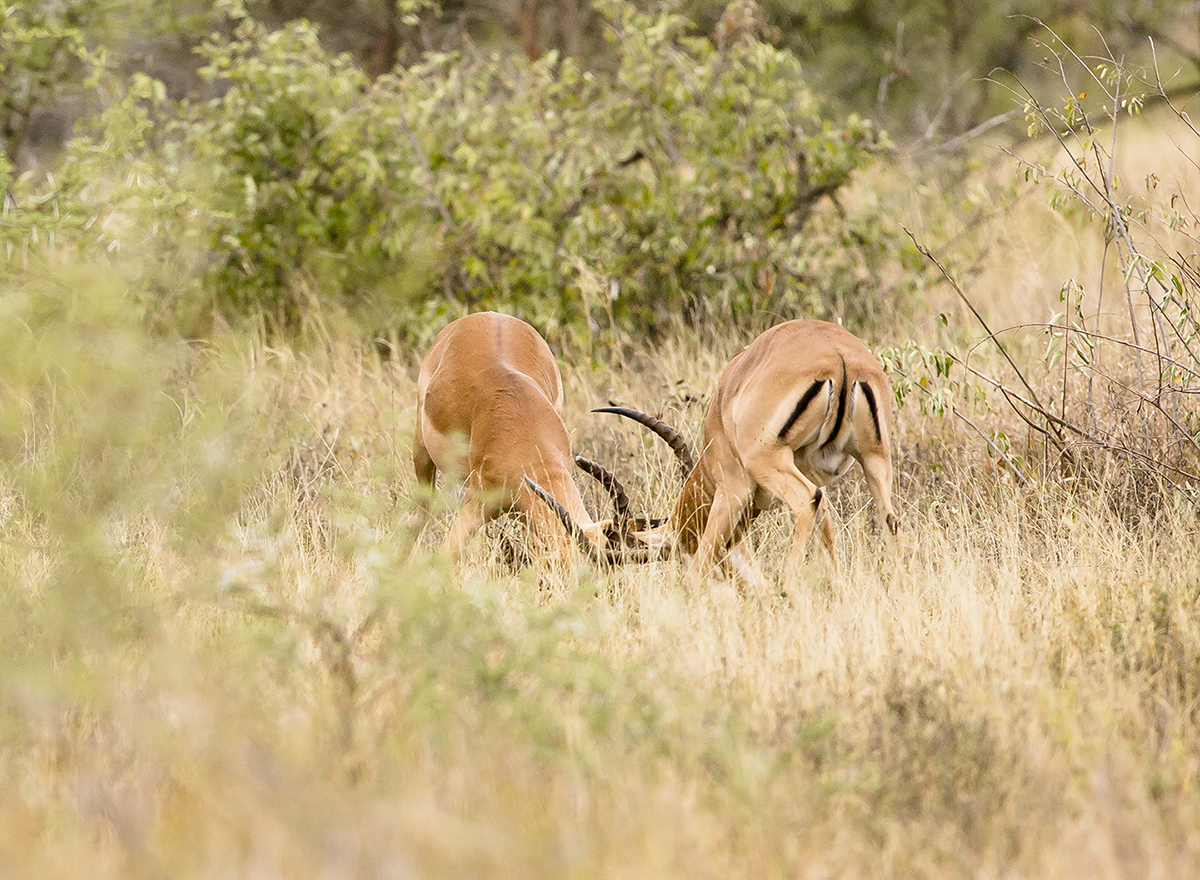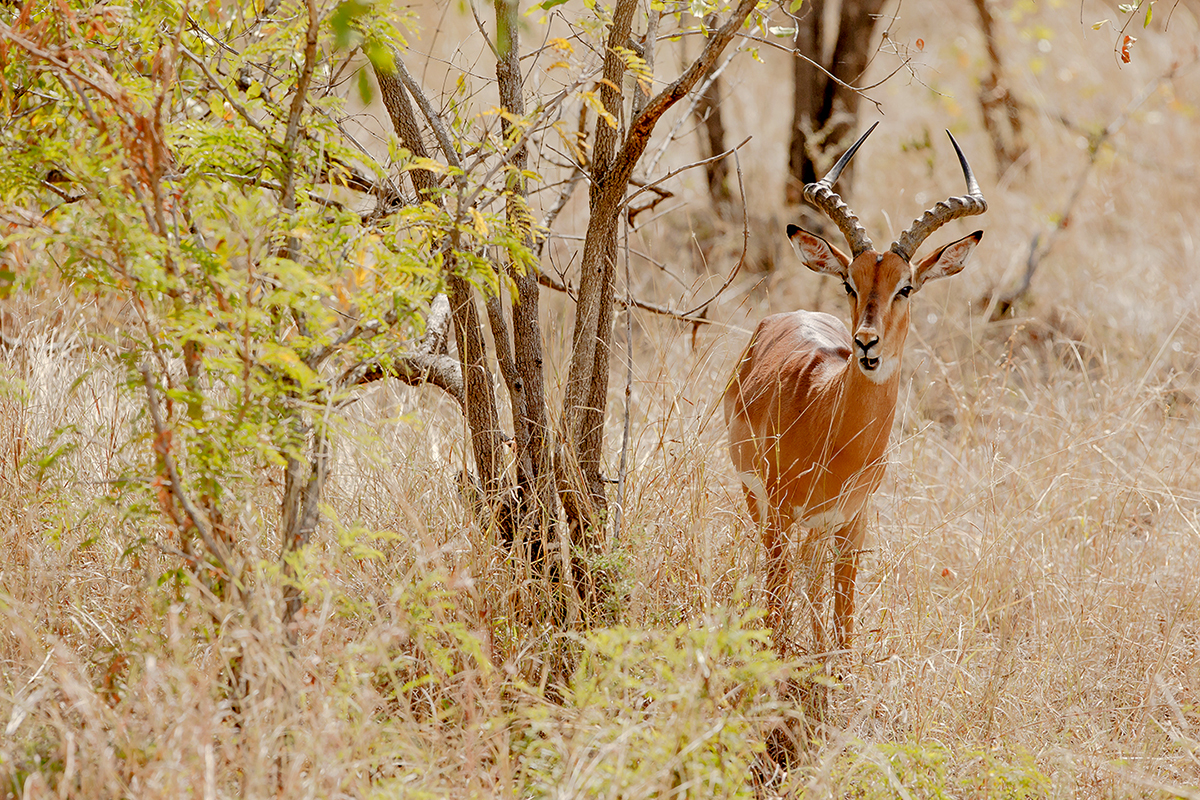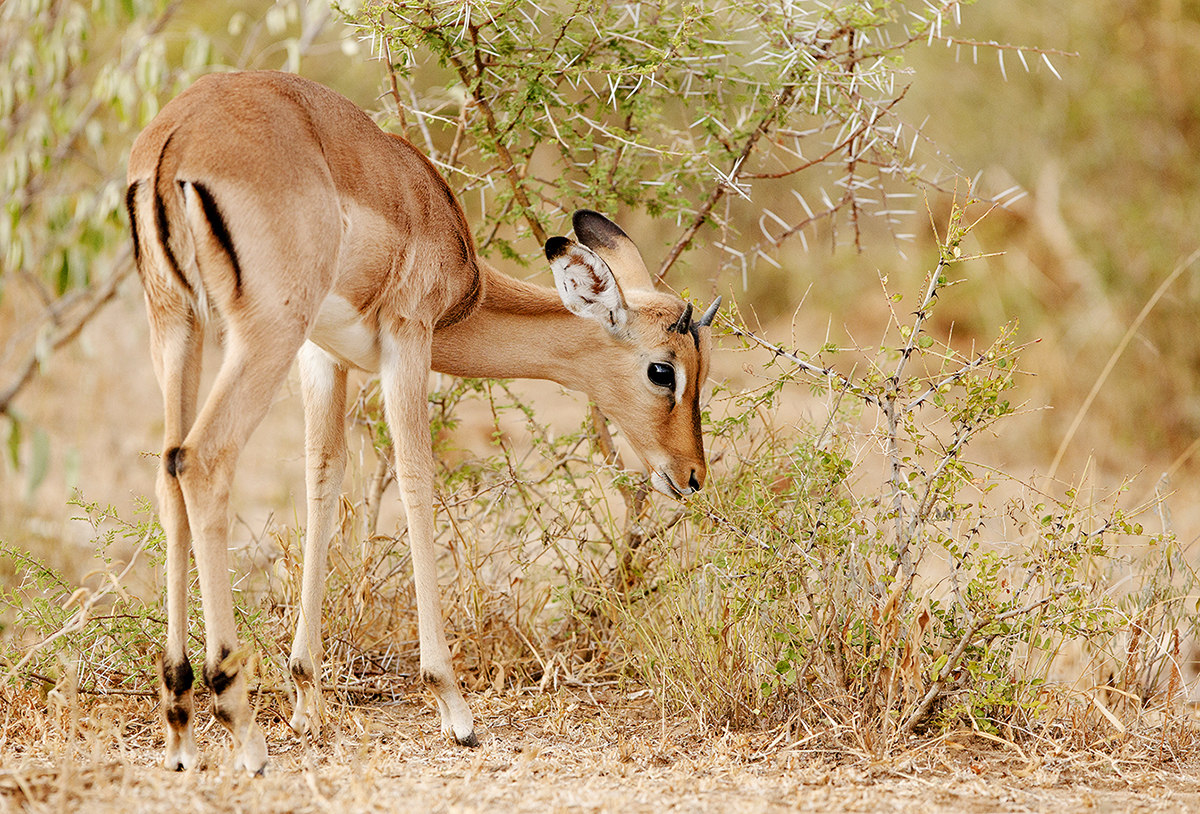Impala
The impala is reddish-brown with white hair inside the ears, over each eye and on the chin, upper throat, underparts, and buttocks. A narrow black line runs along the middle of the lower back to the tail, and a vertical black stripe appears on the back of each thigh. Impalas have unique brush-like tufts of black hair that cover a scent gland located just above the heel on each hind leg. The female is similar to the male but does not have horns. The male’s graceful lyre-shaped horns are about 40 to 90 centimetres long.
Unsustainable livestock farming and human encroachment are major threats to impala’s future. Wildlife habitats are being disrupted with the expansion of roads and settlements. As roads segment habitats, wildlife migrations are affected, and wildlife has difficulty moving between parks to find food, mates, and give birth.
Impalas are one of the most commonly hunted antelope on hunting safaris in South Africa and are also the second most numerous species harvested for biltong. Poaching along the outskirts and even within protected areas combined with the agro-pastoral development, is threatening stable populations.
